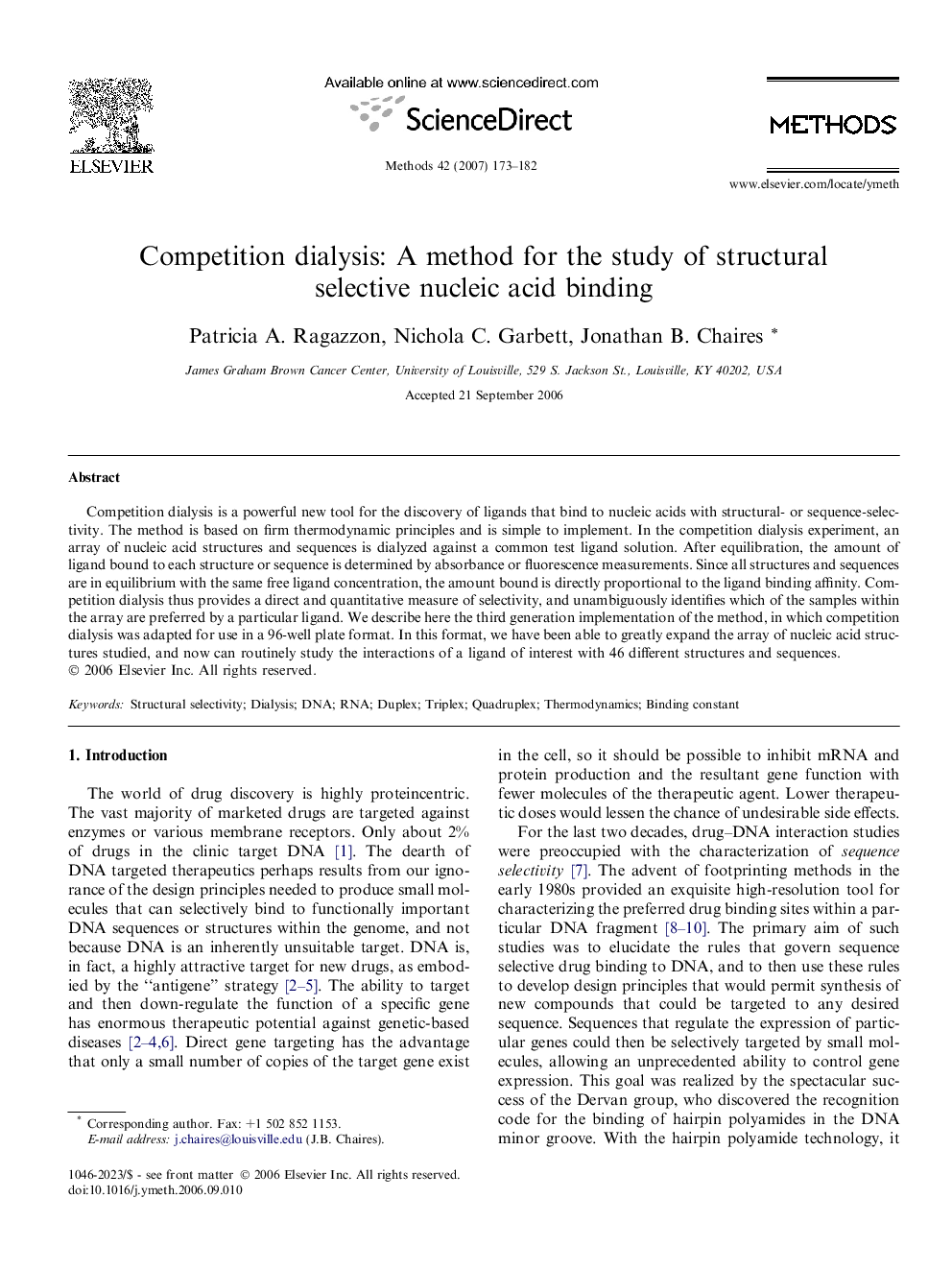| Article ID | Journal | Published Year | Pages | File Type |
|---|---|---|---|---|
| 1994572 | Methods | 2007 | 10 Pages |
Competition dialysis is a powerful new tool for the discovery of ligands that bind to nucleic acids with structural- or sequence-selectivity. The method is based on firm thermodynamic principles and is simple to implement. In the competition dialysis experiment, an array of nucleic acid structures and sequences is dialyzed against a common test ligand solution. After equilibration, the amount of ligand bound to each structure or sequence is determined by absorbance or fluorescence measurements. Since all structures and sequences are in equilibrium with the same free ligand concentration, the amount bound is directly proportional to the ligand binding affinity. Competition dialysis thus provides a direct and quantitative measure of selectivity, and unambiguously identifies which of the samples within the array are preferred by a particular ligand. We describe here the third generation implementation of the method, in which competition dialysis was adapted for use in a 96-well plate format. In this format, we have been able to greatly expand the array of nucleic acid structures studied, and now can routinely study the interactions of a ligand of interest with 46 different structures and sequences.
